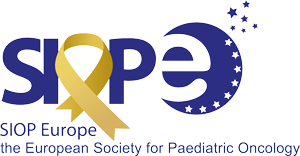In the late 1980s, atypical teratoid / rhabdoid tumours (AT/RT) were identified as a separate histological and biological entity among malignant central nervous system in children, with its highest incidence in the very youngest children. Subsequently, it became clear that AT/RTs nearly always harbour deletions in chromosome 22 but very rarely any other chromosomal copy number aberrations; that AT/RTs nearly always harbour specific SMARCB1 mutations with a few cases displaying other, closely related changes; and that AT/RT is the most classical malignant CNS tumour caused by epigenetic changes.
Until AT/RT was identified as a distinct biological and clinical entity, AT/RT was usually treated like medulloblastoma, and the vast majority of patients died from progressive or relapsing disease. Subsequently, only one trial and a few case series have been published on the treatment of this disease. Key factors associated with a higher chance of long term survival are gross total resection and the use of chemotherapy regimens including anthracyclines. The only published trial and several other collaborative groups also recommend early focal or craniospinal radiotherapy as an important part of curative therapy, but this view is challenged by other collaborative groups.
Biologically, rhabdoid tumours of the CNS (AT/RTs) closely resemble rhabdoid tumours with any other location (renal, soft tissues…). Recently, three biologically defined subgroups of rhabdoid tumours have been identified by several groups of researchers. Due to the biological and genetic homogeneity of rhabdoid tumours of all locations, one collaborative group (EU-RHAB) in 2007 decided to treat rhabdoid tumours of all locations following the same treatment concept. Other collaborative groups are currently considering taking the same approach.
The SIOP BTG AT/RT working group members agree that novel drugs targeting the unique biological features of rhabdoid tumours are needed to significantly improve the therapy for affected children. Unfortunately, due to the rarity and very young age of AT/RT patients and due to lack of adult cancers with a similar biology, so far most efforts to obtain novel drugs made available for testing in children with rhabdoid tumours have been fruitless.
Improving the access to novel drugs for children with AT/RT, elucidating in further detail the biology and the biological subgrouping of rhabdoid tumours, and supporting the conduct of one or more European trials for children with rhabdoid tumours are key goals of the working group.
